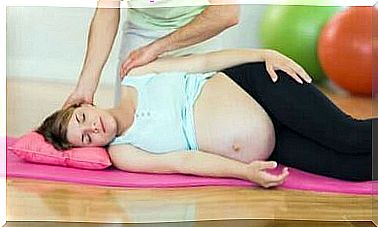Easy And Difficult Births: What Is The Difference?

Easy and difficult births: what is the difference? You have probably read comments about different births in pregnancy books or magazines, or heard about them in a conversation between friends. But what makes a birth easy or difficult?
In this article, we will teach you the difference between easy and difficult births, as well as what characterizes and distinguishes them.
Easy births
An easy birth is a birth without the doctor having to intervene. This is what is commonly called a “natural” birth and the baby comes out vaginally.
When one can expect an easy birth, the date of birth cannot be predicted with complete certainty. This type of birth usually occurs between 37 and 41 weeks into the pregnancy.

When the time is ready, the baby will naturally turn with its head down in the birth canal. With contractions and twists, you can coax out the baby, who is completely ready to leave the uterus.
The goal for the doctor and midwives is to accompany the woman and to support her emotionally. The doctor also makes sure that there are no complications that can prevent a normal birth.
Some women choose a spinal anesthesia. Others decide to get through the pain so as not to miss any of the experience.
If anesthesia is not applied, the mother must try to manage the pain in other ways. The pain can tire her out, give rise to fear and create a feeling of lack of control. Breathing techniques can help the mother stay calm.
An easy birth is the one that nature has intended for all women, and the one that involves less risk for both the mother and the child.
Difficult births
Difficult births are when there are complications that require a doctor to intervene. They are further classified into two groups, depending on whether the complications come from the mother or the child.
Complications from the mother
In this group, there are anomalies in the body of the woman giving birth. They can be of two types:
- Mechanical delivery complications are those that affect the bone structure of the pelvis. There may be a lack of space in the pelvic area so that the child does not have room to penetrate on his way out. There are other mechanical complications that have to do with the uterus or birth canal and that affect the soft tissues. In these cases, the doctor will decide how to proceed.
- Dynamic delivery complications are those that affect the uterus’ ability to contract. They can impair the frequency and intensity of the contractions. Sometimes the contractions become too strong. Sometimes they become very weak and irregular. Non-rhythmic contractions are also included in this category.

Complications from the child
- The child lies on its side or across. The baby is not in the usual position with the head down: instead of having the head against the mother’s pelvis, the fetus lies sideways. Then the doctor will no doubt decide to perform a caesarean section.
- The child is in the seat . In this case, it is the feet or buttocks that lie in the birth canal. The doctor will also likely choose a cesarean section in this case. If the conditions are optimal, you can choose a vaginal birth as an alternative.
Can a difficult birth be prevented?
Research indicates that there are signs before the birth that make it possible to predict a possible birth complication. These include a higher age of the mother or if the child is too big and heavy. If the labor lasts too long, it is also a risk factor.
It is often recommended that pregnant women move and walk around before the date of birth. Changing posture during labor can help the baby position itself and prevent a difficult birth.
In addition, relaxation and deep breathing techniques can contribute to a greater sense of security and comfort for the mother.









